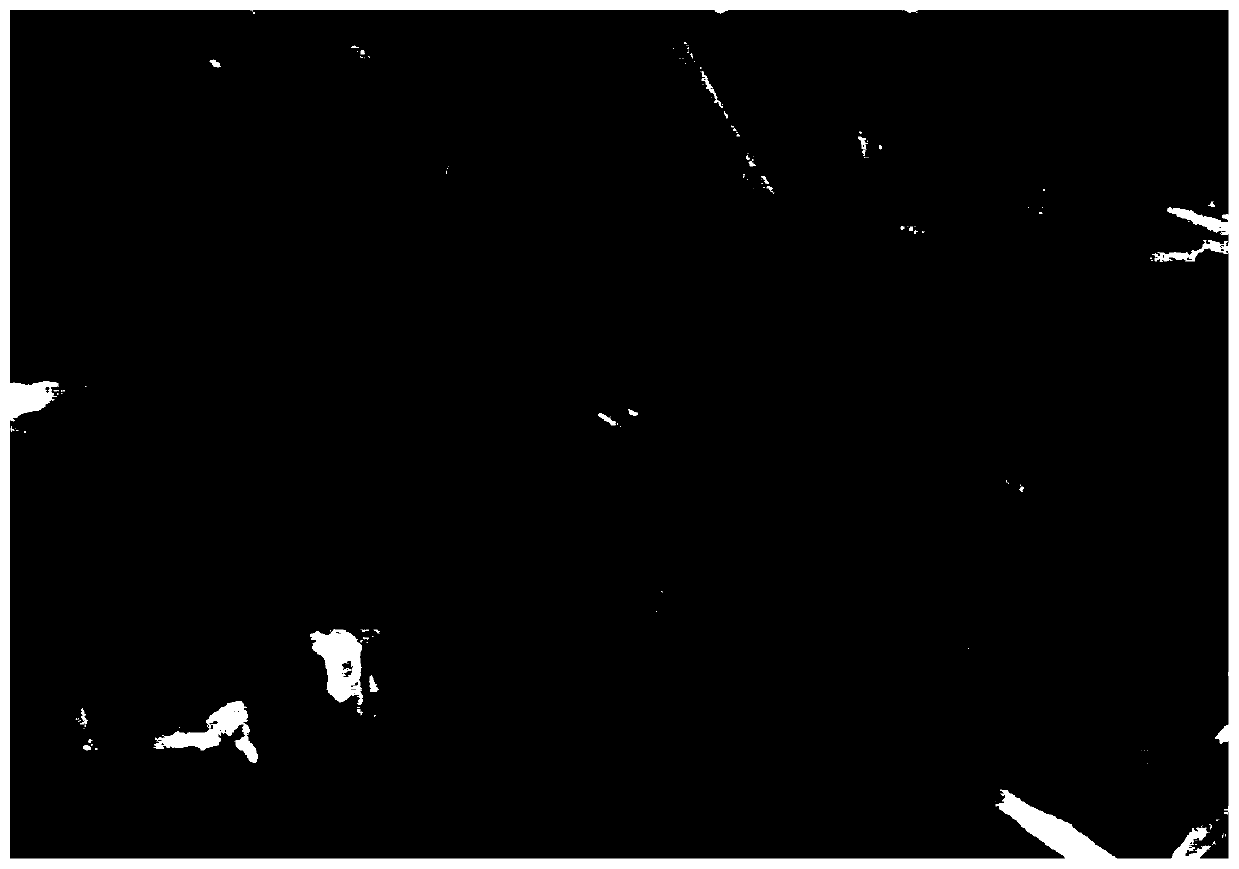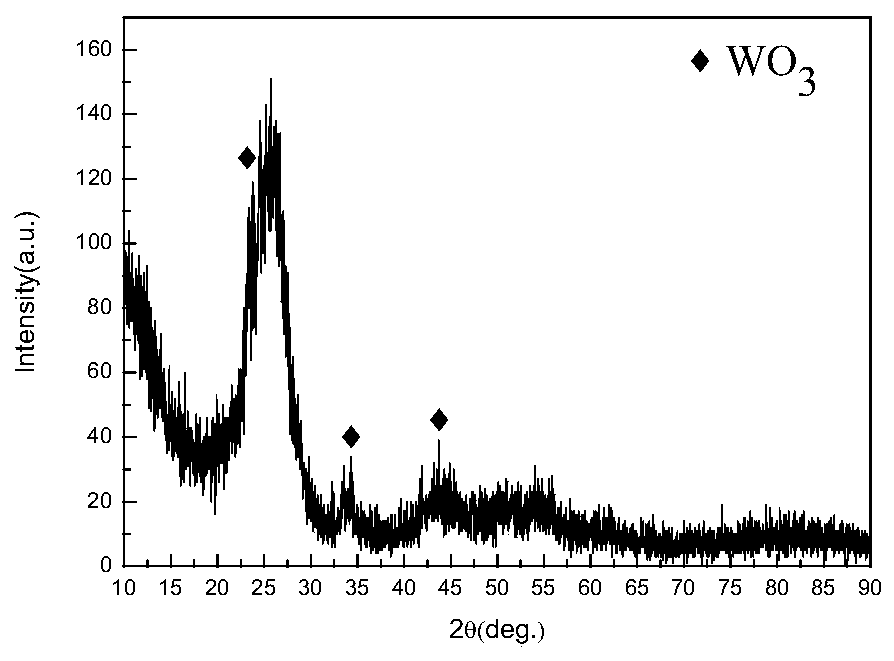Preparation method of tungsten disulfide nanosheet for electrocatalytic hydrogen evolution
A technology of tungsten disulfide and electrocatalysis, applied in chemical instruments and methods, electrodes, inorganic chemistry, etc., to achieve the effect of simple method, uniform distribution and low cost
- Summary
- Abstract
- Description
- Claims
- Application Information
AI Technical Summary
Problems solved by technology
Method used
Image
Examples
Embodiment 1
[0022] Dissolve 2g of sodium tungstate and 25g of hydrochloric acid in 250ml of deionized water, and stir for 30 minutes to obtain a uniform solution. 20 ml of the above-prepared solution was taken into a stainless steel autoclave (50 mL), and then 1 g of ammonium sulfate was added to the solution. A piece of carbon cloth (2 cm × 2 cm) was ultrasonically cleaned with acetone, deionized water, and ethanol in sequence, put into an autoclave and sealed, and kept at 180 °C for 16 h. After cooling the autoclave to room temperature, the carbon cloth was removed and rinsed several times with deionized water, and dried at 60 °C in ambient air. Finally, tungsten trioxide / carbon cloth (WO 3 / CC) were calcined at 450° C. for 1 hour in air.
[0023] Under the protection of argon atmosphere, tungsten trioxide was calcined in the high temperature zone of the dual temperature zone tube furnace, and the temperature was raised to 600°C at a rate of 20°C / min. At the same time, 1g of sulfur p...
Embodiment 2
[0025] Considering that the amount of tungsten trioxide prepared in one experiment in the above example is too small, the preparation of tungsten trioxide can be realized by increasing the amount of precursor. Dissolve 6g of sodium tungstate and 25g of hydrochloric acid in 250ml of deionized water, and stir for 30 minutes to obtain a uniform solution. 20 ml of the above-prepared solution was taken into a stainless steel autoclave (50 mL), and then 1.5 g of ammonium sulfate was added to the solution. A piece of carbon cloth (2 cm × 2 cm) was ultrasonically cleaned with acetone, deionized water, and ethanol in sequence, put into an autoclave and sealed, and kept at 180 °C for 16 h. After cooling the autoclave to room temperature, the carbon cloth was removed and rinsed several times with deionized water, and dried at 60 °C in ambient air. Finally the obtained sample was calcined at 450° C. for 1 hour in air. Other experimental steps are the same.
Embodiment 3
[0027] By controlling the holding time of the tube furnace, the size and thickness of the tungsten disulfide nanosheets can be controlled, and other experimental conditions remain unchanged. The holding time of the tube furnace was halved to 1 hour to obtain thinner and smaller tungsten disulfide nanosheets.
PUM
 Login to View More
Login to View More Abstract
Description
Claims
Application Information
 Login to View More
Login to View More - R&D
- Intellectual Property
- Life Sciences
- Materials
- Tech Scout
- Unparalleled Data Quality
- Higher Quality Content
- 60% Fewer Hallucinations
Browse by: Latest US Patents, China's latest patents, Technical Efficacy Thesaurus, Application Domain, Technology Topic, Popular Technical Reports.
© 2025 PatSnap. All rights reserved.Legal|Privacy policy|Modern Slavery Act Transparency Statement|Sitemap|About US| Contact US: help@patsnap.com



